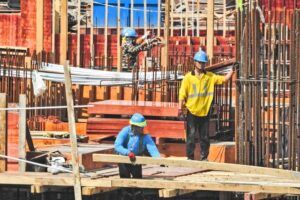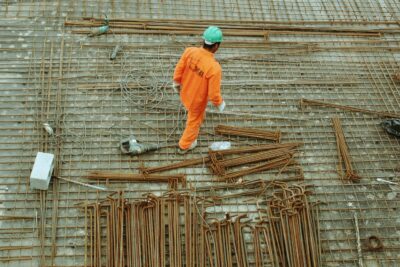When you look at a sleek office building or a state-of-the-art facility, you’re seeing the finished product. But what went into creating it? The truth is, modern building development is like an iceberg—most of the critical work happens beneath the surface, invisible to the casual observer. From the initial site assessment to the final touches, countless processes work together to transform an empty lot into a functional space. Today’s construction projects involve sophisticated technology, specialized equipment, expert coordination, and meticulous planning. Let’s pull back the curtain and explore what really happens behind the scenes of modern building development.
The Foundation of Success Starts with Accurate Planning
Pre-Construction Assessment and Documentation
Before a single shovel hits the ground, there’s a mountain of preparatory work to complete. Think of it like planning a road trip—you wouldn’t just jump in the car without knowing where you’re going, right? The same logic applies to construction projects, except the stakes are much higher.
Site analysis used to involve surveyors with measuring tapes and clipboards, spending weeks gathering data. Today, technology has revolutionized this process entirely. Advanced techniques like 3d surveying sydney create incredibly precise digital models of construction sites. These technologies capture millions of data points in hours rather than weeks, giving project teams a comprehensive understanding of what they’re working with. This level of accuracy is especially valuable in urban areas where space is tight and every centimeter counts.
Why does this matter so much? Because mistakes caught on paper (or rather, on screen) are far cheaper to fix than mistakes caught mid-construction. When you have accurate measurements from the start, you avoid costly surprises like discovering underground utilities where your foundation needs to go or realizing the site slopes more than you thought.
Design Coordination and Stakeholder Alignment
Once you understand the site, the next challenge is getting everyone on the same page. Architects want beautiful designs, engineers need structural integrity, and clients have budget constraints. It’s like trying to get a family to agree on a vacation destination—everyone has different priorities.
Modern projects use digital collaboration tools that let all these stakeholders work from the same set of plans. Changes made by one team member instantly appear for everyone else. This transparency prevents the nightmare scenario where the architect designs something the engineer says is impossible, or the plumber plans pipes where the electrician already routed wiring.
Specialized Equipment Requirements in Different Facility Types
Understanding Diverse Building Purposes
Here’s something most people don’t realize: not all commercial buildings are created equal. A retail store has completely different needs than a research laboratory or a medical clinic. Each type of facility comes with its own set of requirements that must be planned for from day one.
Standard office buildings need reliable power, climate control, and internet connectivity. But specialized facilities? That’s where things get interesting. Research labs need environmental controls so precise that a few degrees of temperature variation could ruin months of experiments. Medical facilities require backup power systems that kick in instantly if the main power fails. These aren’t nice-to-haves—they’re mission-critical features.
Scientific and Medical Facility Considerations
Let’s talk about laboratories and research facilities for a moment. These spaces require environmental conditions that would make Goldilocks proud—everything has to be just right. Temperature, humidity, and air quality aren’t suggestions; they’re strict requirements.
Take cell culture research, for example. Scientists working with biological samples need equipment like a co2 incubator to maintain precise conditions for their experiments. These devices regulate temperature and carbon dioxide levels with incredible accuracy, creating the perfect environment for cells to grow. But here’s the catch—these units require substantial electrical capacity, specific ventilation requirements, and often need water connections too.
Planning for such specialized equipment isn’t an afterthought. It happens during the design phase. The electrical systems need adequate capacity and often require dedicated circuits. The HVAC system must handle the heat these devices generate without affecting the rest of the building. Even the floor needs to support the weight. It’s a domino effect where one requirement triggers several others.
This is why architects and engineers spend so much time understanding exactly what will happen inside a building. A research facility that seems similar to an office building on the outside might have completely different internal requirements.
Building Systems That Keep Projects Running Smoothly
The Critical Role of MEP Systems
Now let’s dive into what contractors call the “guts” of a building—the mechanical, electrical, and plumbing systems. These are the networks that make a building actually work. Without them, you’ve just got an expensive box with walls.
Quality matters enormously here. Cheap components might save money upfront, but they’ll cost you later through repairs, replacements, and downtime. And here’s something that often gets overlooked: accessibility. When something eventually needs maintenance or repair (and it will), can technicians actually reach it? Or did someone wall it in to save space?
Smart building managers think about these systems holistically. The plumbing needs to work with the electrical. The HVAC needs to integrate with both. Everything connects, which is why coordination during installation is crucial.
Innovations in Installation Efficiency

The construction industry has come a long way from the days when everything was custom-fitted on site. Today, there’s a growing emphasis on systems that install faster without sacrificing quality. Why? Because time is money, especially in commercial construction where every day of delay costs someone revenue.
Modern solutions like cam lock plumbing fittings exemplify this shift toward efficiency. These quick-connect systems allow plumbers to make secure connections in a fraction of the time traditional methods require. Instead of threading pipes or sweating copper joints—processes that require skill and time—these fittings lock into place mechanically.
But speed isn’t the only advantage. These systems are also incredibly durable and allow for easier modifications down the road. If you need to reconfigure a space, disconnecting and reconnecting becomes straightforward rather than requiring major demolition and reconstruction.
The key is balancing installation speed with long-term performance. The best components are those that go in quickly but last for decades. Experienced builders know that cutting corners during installation creates problems that multiply over time.
Bringing It All Together Through Expert Construction Management

The Execution Phase Where Plans Become Reality
All the planning in the world doesn’t matter if the execution falls short. This is where experienced construction teams make all the difference. Transforming blueprints into actual buildings requires coordinating dozens of specialized trades, managing complex timelines, and solving problems as they arise.
Professional services like Froth Build’s commercial building construction services handle the countless details that turn concepts into completed structures. They’re managing material deliveries, scheduling subcontractors, ensuring quality standards, and keeping projects on track. Think of them as orchestra conductors—they don’t play every instrument, but they ensure everyone plays together harmoniously.
What separates good construction management from great? Communication and adaptability. Even the best-laid plans encounter unexpected challenges. Maybe the soil conditions aren’t quite what the initial survey suggested, or a material shipment gets delayed. Great project managers handle these curveballs without derailing the entire project.
Quality Control and Project Oversight
Throughout construction, constant vigilance ensures everything meets specifications. Regular inspections catch issues early when they’re easier and cheaper to fix. This isn’t about being nitpicky—it’s about ensuring the building performs as intended for decades to come.
Project managers maintain detailed documentation of every phase. This creates accountability and provides valuable information for future maintenance. They’re also the communication hub, keeping clients informed and making sure architects, engineers, and trades are aligned.
The Invisible Work That Ensures Long-Term Success

Post-Construction Considerations
Even after the last worker leaves the site, there’s still crucial work ahead. Systems need testing and commissioning to verify they operate correctly. Controls need programming. Staff need training on how everything works.
This phase often gets rushed because everyone’s eager to move in, but skipping these steps creates problems later. Properly commissioned systems run more efficiently and last longer. Well-trained facility managers catch small issues before they become big problems.
Sustainable and Future-Proof Design
Forward-thinking projects consider not just immediate needs but future adaptability. Technology changes. Business needs evolve. Buildings designed with flexibility in mind adapt to these changes without requiring major renovations.
Energy efficiency has moved from optional to essential. Better insulation, efficient HVAC systems, and smart controls reduce operating costs while benefiting the environment. These aren’t just feel-good measures—they deliver real financial returns over the building’s lifetime.
Conclusion
Modern building development is remarkably complex, requiring expertise across numerous disciplines. Success depends on accurate initial planning, appropriate equipment selection, quality system installation, and skilled project management. Each element supports the others—weakness in one area compromises the entire project.
The best buildings result from collaboration between specialized professionals who understand how their work fits into the larger picture. From the precision of initial site surveys to the expertise of construction teams, every contribution matters. While the process remains invisible to most observers, this behind-the-scenes work determines whether a building becomes a lasting asset or a constant headache.
FAQs
What is the most important phase in building development?
While all phases matter, the planning stage prevents the most expensive mistakes. Errors caught during design cost far less to fix than those discovered mid-construction. Thorough upfront planning creates a roadmap that guides the entire project.
How has technology changed construction projects?
Technology has revolutionized nearly every aspect. Digital surveying creates precise site models in hours instead of weeks. Building Information Modeling (BIM) lets all team members work from synchronized plans. Drones inspect hard-to-reach areas. These tools improve accuracy, speed up timelines, and reduce costly errors.
Why do specialized facilities cost more to build?
Specialized facilities require unique systems and equipment. Research labs need precise environmental controls. Medical facilities need backup power and specialized ventilation. These requirements increase both material costs and labor complexity. Additionally, specialized contractors with specific expertise typically command higher rates.
What should I look for in a construction service provider?
Experience with diverse project types matters enormously. Look for providers with strong quality control processes and clear communication practices. Check references from past clients. The best construction managers solve problems proactively rather than reactively, keeping projects on schedule and within budget while maintaining high standards.
View the original article and our Inspiration here


Leave a Reply